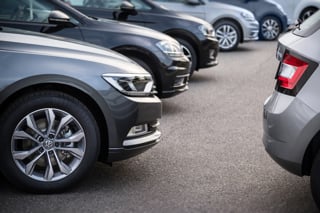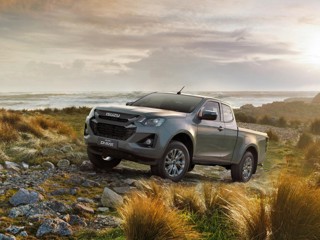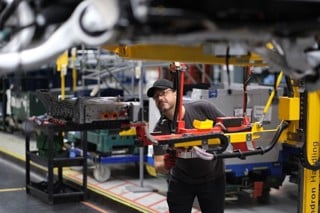Fleets are being urged to consider HMRC guidance around the use of crew panel vans after the tax status of double cab pick-ups was changed in the Budget.
Double cab pick-up trucks will be treated as company cars for tax purposes, dramatically increasing benefit-in-kind (BIK) tax paid by drivers and the costs incurred by employers, from next year.
The change has sparked concern amongst some fleet decision-makers, asking what this may mean for double crew panel vans used by thousands of businesses in the UK.
David Quartermain, partner at Innovation Professional Services, explained that the changes announced in the Budget were specific to double cab pick-ups.
HMRC guidance defines the vehicle as having a front passenger cab that contains a second row of seats and is capable of seating about four passengers, plus the driver, along with having four doors capable of being opened independently, whether the rear doors are hinged at the front or the rear. Two door versions are normally accepted to be vans.
It also suggests that there should be an uncovered pick-up area behind the passenger cab.
“There is no change to the classification of other ‘vans’,” said Quartermain.
He told Fleet News that the “governing principles” of what constitutes a van were set out in the 2020 Coca-Cola Court of Appeal tax case.
The case, involving HMRC and Coca-Cola, centred around whether three commercial vehicles (two Volkswagen Kombi vehicles and one Vauxhall Vivaro) operated by the drinks firm should be classified as vans or cars for benefit-in-kind purposes.
The Court of Appeal decided the vans being used by Coca-Cola should be treated as company cars and not vans for tax purposes.
HMRC van tax guidance
Simon Down, a director in Deloitte’s employment tax automotive team, told Fleet News: “If a vehicle is not covered by the DCPU (double cab pick-up) guidance, then employers will need to consider whether it would be deemed a company car or company van.”
To help make that assessment, Down urges fleet decision-makers to consider HMRC guidance issued in the wake of the Coca-Cola ruling.
“Given this can be a nuanced area, where the result can depend on a particular vehicle and specification, employers may wish to seek advice from HMRC or a qualified advisor,” he said.
The HMRC guidance says that “one would need to demonstrate that the predominant suitability of the vehicle in question was for the conveyance of goods or burden, in order to be classified as a goods vehicle”.
It adds: “The Courts’ view was that this imports something more than marginal, or just about (51% to 49% for example).”
In passing judgement, Lady Asplin had stated that “‘primarily’ means something more than a suitability which is first in the list by a whisker”.
“It means first and foremost. It cannot encompass very narrow margins. It is also possible for a multi-purpose vehicle to have no primary suitability at all.”

Quartermain told Fleet News: “We would encourage all fleets to ensure their vehicles are correctly reported as cars or vans.
“We appreciate this can be difficult and would urge HMRC to help clarify matters by publishing a definitive list of vehicles that may be caught by the judgement and confirm if each is viewed as a car or a van for benefit in kind purposes.”
HMRC did publish a list distinguishing cars/vans for VAT purposes back in 2015, but it has not been updated since then.
“The list makes it clear it was not intended for use for anything other than VAT, and it pre-dates the outcome of the Coca-Cola case,” continued Quartermain.
“Furthermore, the recent guidance from HMRC on double cab pick-ups explicitly states that their treatment for VAT will not always match the benefit in kind treatment.
“This is clearly an area where HMRC needs to update their guidance.”
Tax implications
In terms of double cab pick-ups, from April 2025 for corporation tax and from April 6 2025 for income tax, they will be treated as cars for the purposes of capital allowances, BIK and some deductions from business profits.
The existing capital allowances treatment will apply to those who purchase double cab pick-ups before April 2025.
Transitional BIK arrangements will apply for employers that have purchased, leased, or ordered a double cab pick-up before April 6, 2025.
The Treasury says that they will be able to use the previous treatment, until the earlier of disposal, lease expiry, or April 5, 2029.
Classifying a crew van as a car would creat significant additional costs for both employer and employee.
For example, a diesel vehicle with a list price of £40,000 and CO2 emissions of 150g/km would give rise to the following liabilities.
If classified as a van, the benefit would either be nothing, if only made available for business travel, or £3,960, if it’s available for personal use and £757 for the fuel benefit (2024/25).
Therefore, a 40% taxpayer would pay around £1,880 for the benefit this tax year (2024/25), while Class 1A NIC incurred by the employer would be approximately £650.
However, if classed as a car for BIK purposes, the cash equivalent of the benefit would be calculated at £14,000 based on a BIK rate of 35% (2024/25), resulting in a 40% taxpayer facing a £5,600 company car tax bill and the employer increased NIC costs of £1,932.

























Login to comment
Comments
No comments have been made yet.